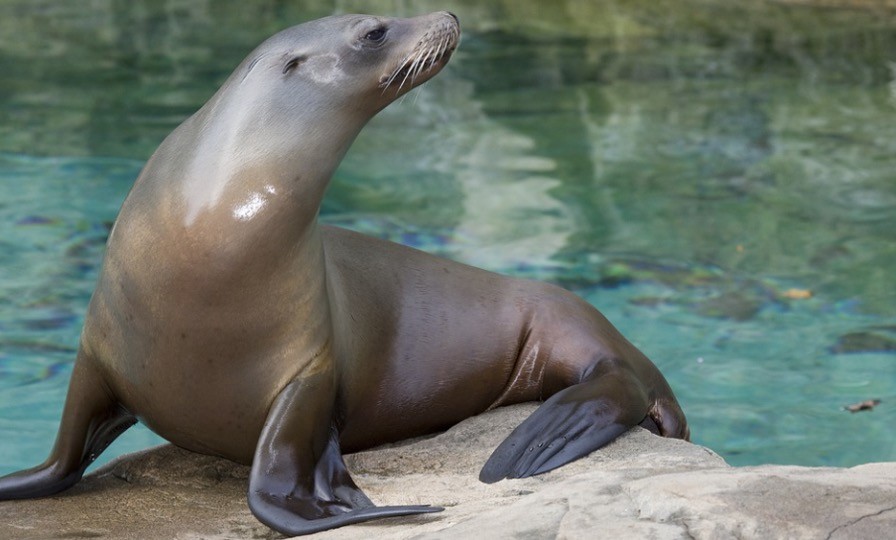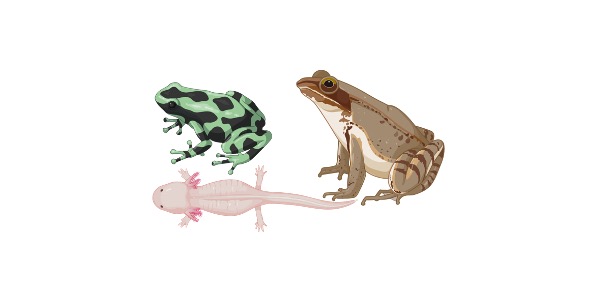Table of Contents
Sea Lion: All You Need To Know
The sea lion is a carnivorous marine mammal that belongs to the kingdom of Animalia, phylum Chordata, and class Mammalia. Its genuses are Eumetopias, Neophoca, Otaria, Phocarctos, and Zalophus, and it has various species. Its length is 1.8 to 3.0 m and it weighs up to 100 to 1000 kg. It lives in the coastal marine waters with a lifespan up to 20 to 30 years.

What is Sea Lion?
The sea lion is a giant marine mammal that belongs to the taxonomic Pinnipedia, or pinnipeds, family. It is distinguished by its external ears and the ability to move on all fours using its long front flippers, which seals lack. Sea lions exist in five genera and may be found in coastal seas across the world’s oceans, from subarctic to tropical latitudes.
Sea Lion Description
Sea lions are big and sleek, with short, dense hair and a smooth look. They can swim well because they have big front flippers and a tail fin. They can walk on land as well, but they are not quite as elegant as they are in the water.
Depending on the species, male sea lions may weigh up to 300 kg (660 lb) and grow to be 8 ft (2.4 m) long. Females are often smaller, weighing between 100 and 200 pounds (45-90 kg).

Sea lions are divided into five genera, each with its own species. The Steller’s sea lion is the biggest species, weighing up to 2 200 lb (1 000 kg) and reaching a length of 10 ft (3.0 m).
They are related to walruses and seals, but unlike seals, they lack the large tusks of walruses and can nevertheless ‘walk’. They are classified as Otariidae, or eared seals, together with fur seals, because of their distinctive external ear flaps.
Sea Lions Distribution and Range
Sea lions are present in most of the world’s seas, ranging from subarctic to tropical regions in both hemispheres, and are divided into five genera. California sea lions and Steller sea lions may be found around North America’s west coast, while the Galapagos sea lion is found along the coasts of northern South America near Ecuador.
The South American sea lion (Otaria flavescens), which lives mostly along the Chilean coast, is also found in South America, while New Zealand and Australia each have their own species of sea lions.
All sea lions live in coastal areas, and they like to congregate at well-known ‘haul-out places,’ where they exit the water and rest on the rocky coast. Small, rocky islands or isolated shorelines may be used as haul-out locations.
Man-made buildings, such as navigation aids and ports, are frequently visited by sea lions. Sea lions are excellent swimmers and play and hunt with elegance and speed in the ocean.
Due to specific adaptations and the capacity to stay underwater for minutes at a time, they can dive to enormous depths of up to 900 feet (272 metres).
Sea Lions Diet and Predators
Sea lions are predatory predators with a ravenous appetite. They consume a range of things depending on the species and the location, including huge fish like salmon and tuna. Sea lions will eat penguins where they are both found.
Young seal pups have also been spotted being fed by several species. Squid, different crustaceans and mollusks, tiny shark species, and octopus are also eaten by them. Despite being larger than many animals and a strong predator, sea lions must also contend with other, more formidable predators.
Orcas are apex predators in the water, and they may prey on nearly any species, even sea lions. Puppies are especially vulnerable to predation, and orcas have been known to locate sea lion mating areas and engage in interesting hunting behaviours in the hopes of catching one.
Whales in New Zealand, for example, run the danger of beaching themselves when chasing juvenile sea lions swimming and playing in the surf zone. Large sharks, such as the great white, will target sea lions, especially pups.
Sea Lions Reproduction
The reproductive habits of different sea lion species differ slightly. Many characteristics, however, are shared by all species. In the spring, adult males usually strive to establish a territory. Later, the female will appear in the region, as if to survey the potential territory.
Male infighting will skyrocket at this period, with brutal bouts and aggressive displays taking place in defence of their territory. Females would typically postpone fertilisation for up to three months after copulation, instead mating with different males later in the breeding season.
The gestation period is usually around 9 months, after which each female gives birth to one pup, but twins are uncommon. Females in many species may mate again within weeks of giving birth while caring for their young pup, restarting the yearly cycle.
Sea lions attain sexual maturity around the age of 5-7 years and can live up to 30 years. Three species are now designated as endangered, while the others are not in danger. Certain populations are, however, under threat as a result of global climate change, which is causing significant changes in maritime ecosystems throughout the world.
Fun Facts About Sea Lion!
Sea lions may be found all around the world and are frequently seen by humans in bays, ports, and zoos. They are very clever and have been trained to do a variety of feats in captivity. However, several of these charismatic species’ most remarkable features are best viewed in the wild.
i. The Lion of The Sea
Sea lions are ferocious predators with apparently insatiable appetites, perhaps suiting their popular moniker of “lions of the sea.” They will frequently eat in bunches and successfully gorge themselves before pulling out of the water and resting on a rocky coastline.
Sea lions have been observed to consume up to 8% of their body weight in a single meal. This is the equivalent of a 180-pound person consuming 14.4 pounds (6.5-kg) of food in a single meal.
Sea lions may consume food that is larger than their heads all at once, such as the huge Pacific octopus. Teller sea lions have also been reported hunting sharks and eating the pups of northern fur seals. The sea lion appears to have been appropriately called.
ii. Sea Shepherd
Sea lions exhibit a variety of adaptive behaviours as well as unique hunting and eating tactics. The majority of them are unique to their environment and the prey they may find there. The Galapagos sea lion (Zalophus wollebaek), for example, has been observed engaging in unusual herding behaviour when hunting.
The sea lions will herd tuna into shallow lagoons, making it much simpler to hunt them. Even though tuna are huge and strong predators, the sea lions appear to have discovered a safe approach to hunt them by utilising their numbers and knowledge.
iii. Scuba Sea Lion
Sea lions can dive to incredible depths in quest of food. Water pressure rises as you go deeper. This poses a concern owing to the possible accumulation of nitrogen gas in mammalian tissues, a phenomena that SCUBA divers are familiar with.
Many marine creatures have unique adaptations that enable them to thrive in these conditions. Sea lions have particularly developed lungs that allow them to avoid the exchange of gases in their system while they are underwater, but humans must return from the deep slowly to allow the gases to exit their system at a normal rate.
This adaption allows them to swiftly swim up and down in the water column in pursuit of prey while avoiding hazardous gas accumulation in their circulatory system. However, because the air in their lungs is completely expelled before diving, their muscles must be fully loaded with oxygen prior to diving, which is another requirement for this unique adaptation to remain effective.
Citations
- Rhythmic entrainment: Why humans want to, fireflies can’t help it, pet birds try, and sea lions have to be bribed. Psychon Bull Rev . 2016 Dec;23(6):1647-1659.
- What California sea lions exposed to domoic acid might teach us about autism: lessons for predictive and preventive medicine. EPMA J . 2017 Sep 12;8(3):229-235.
- Heart rate regulation in diving sea lions: the vagus nerve rules. J Exp Biol . 2017 Apr 15;220(Pt 8):1372-1381.
- Vocal learning in seals, sea lions, and walruses. Curr Opin Neurobiol . 2014 Oct;28:66-71.







